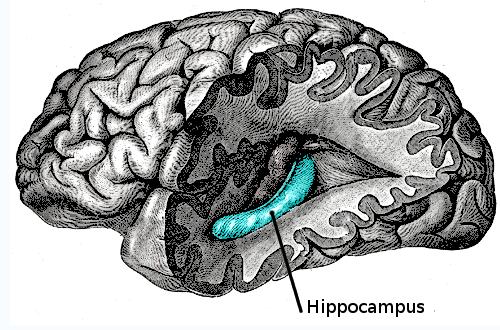Our brain contains its own navigation system, similar to the satellite navigation system, including maps, longitude and distance lines and compasses. Says Dr. Hugo Spears from the University of Liverpool

Prof. Eleanor Magir from University College London reported on the navigation mechanism of the brain located in the area known as the hippocampus, which is responsible for learning, memory and orientation among taxi drivers in London. The study showed that the hippocampus area in taxi drivers in London is enlarged relative to the general population. Even for the bus drivers, this area is not so enlarged. It turns out that taxi drivers need to know about 250 thousand streets.
Dr. Spears and Prof. Magir used the video game "The Getaway" on Sony's PlayStation 2 to study how the hippocampus and other areas of the brain react when the executive steers. The taxi drivers used the virtual reality simulation to navigate the streets of London while connected to an fMRI scanner. The researchers found that the hippocampus is the most active area when the drivers first think about the route and plan it. In contrast, the activity in the diverse network of other enlarged expert areas are activated about ten They encounter roadblocks, observe expected landmarks, look at the scenery and worry about the passenger and the other drivers.
"The hippocampus is critical for navigation and we call it "GPS" says Dr. Spears from the Institute of Behavioral Neuroscience at UCL. "London taxi drivers, who know hundreds of thousands of streets must operate the most powerful Finnish navigation system, and they strengthen it through many years of experience."
In the study, the two found that a part of the brain known as the medial prefrontal cortex increases its activity as the taxi approaches its destination. However, it is still not clear how the brain knows which way to travel to reach the destination, and this is the question that the researcher, funded by the Wellcome Trust insurance company, is trying to answer.
Within the hippocampus and the areas adjacent to it in the brain, the scientists were able to identify three types of cells that, according to Dr. Spears, implement the satellite navigation. These cells are called the position cells, the direction cells and the grid cells.
The location cells map our current location and light up to tell us "you are here" when we pass a specific place. It is estimated that there are hundreds of thousands of location cells in the brain, each preferring a slightly different geographic location. The direction cells work like a compass and tell us which direction we are going. The grid cells, discovered in 2005 by Prof. Edvard Moser from the Norwegian University of Science and Technology, tell us how far we will have to travel using a route of longitude and latitude similar to those used for navigation.
"During the last thousand years, mankind invented and used many navigational tools such as maps, compasses, lines of longitude and latitude on Earth" says Dr. Spears. "Nature is ahead of us and it seems that it has developed these tools in our minds to help us survive"
In a future twist of the research, the two also studied taxi drivers whose hippocampus was damaged by a virus, which led to forgetfulness, he was still able to reach his destination via main roads but could no longer navigate through the small and winding streets of the British capital.

9 תגובות
"During the last thousand years, humanity invented and used many navigational tools such as maps, compasses, lines of longitude and latitude on the Earth's surface," says Dr. Spears. "Nature is ahead of us...
Perhaps it is not exactly that nature is ahead of us, but that we develop tools similar to our nature, and only finally discover that nature is as we planned.
I imagine that aliens would have developed tools similar to their nature.
Humans in the past had a natural compass, in magnetite, like various animals that use it to this day (bats, birds, etc.) for navigation purposes. on the first maps) this ability to navigate has deteriorated, today there is a tiny amount of this magnetic mineral in humans but not in a way that can actually be used.
Stored=>stored
point:
No.
The hippocampus is involved in the process of creating new memories, but the memory is not stored there.
For more details see here:
http://en.wikipedia.org/wiki/Hippocampus
Straw man, on the contrary. I say navigation is no different than memory. As surely there are 1001 different types.
The fact that it is said that the hippocampus is A B C does not contradict the fact that it has 1001 more potential uses that we have not yet discovered. Navigation memory and the interaction between them is just a drop in the ocean 🙂
Please be patient period
That's what I'm missing.
Chepha in the hippocampus. Who knows what will come from there.
to Mr. Point,
If you are not satisfied, go to the checkout, show your receipt, and say I sent you. They will give you all the money you paid back and also a chafa in the hippocampus.
Isn't the hypo the area of memory? And if so, what's new? It will obviously be the active area while calculating routes or trying to remember a recipe for baking a cake.
Or did they have to come to conclusions to justify money for more research?